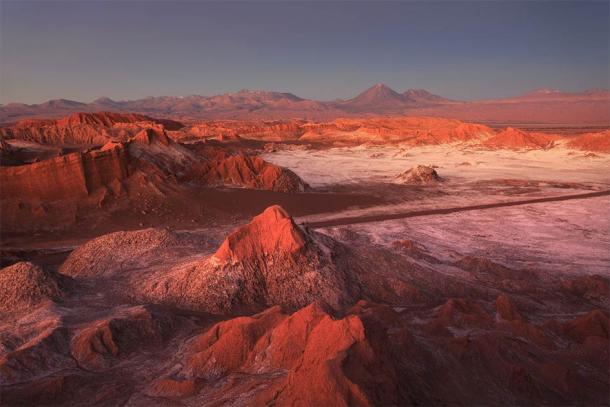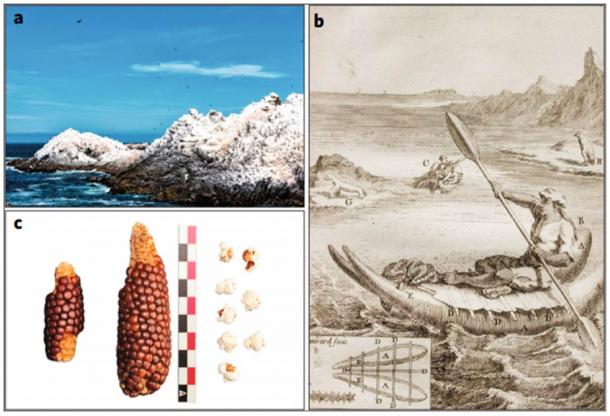“White Gold,” or seabird guano fertilizer, is found to have boosted agricultural systems in the pre-Inca civilizations of South America who inhabited Chile’s hellish Atacama Desert.
Seabird and bat guano (excrement) is a prized source of N-P-K, (Nitrogen, Phosphorus and Potassium) and those gardeners among you will know that these three chemicals are essential in a balanced crop of plants, fruits and veg. Particularly high in nitrogen, phosphorus and trace minerals, guano provides well-balanced nutrition and because it’s totally natural it causes no undesirable disruptions to creatures and habitats.
A new research paper published in the journal Nature Plants , called “‘ White gold’ guano fertilizer drove agricultural intensification in the Atacama Desert from AD 1000,” presents new findings on the development of large population centers between 1000 and 1450 AD in what is today northern Chile.
The Atacama Desert covers a 1,600 km (990 mi) strip of land on the Pacific coast to the west of the Andes Mountains and according to Smithsonian this is “the driest nonpolar desert in the world, as well as the only true desert to receive less precipitation than the polar deserts and the largest fog desert in the world.”

Moon Valley, Atacama Desert, Chile. ( sunsinger / Adobe Stock)
Sampling Ancient Foods From The Surface Of Mars
Most of the Atacama Desert is greatly composed of salt lakes called “ salares,” and felsic lava flows towards the Andes. However, in this hostile landscape that is often compared with the surface of Mars, Professor Francisca Santana-Sagredo, from the Pontificia Universidad Católica de Chile , Santiago, Chile, discovered “robust agricultural systems” that she claims “supported pre-Incan civilizations for centuries.”
The researcher set out to answer why pre-Hispanic archaeological records of northern Chile detail large quantities of diverse crops suggesting a high level of agricultural success had been achieved, but until now “has defied explanation.” The research project tried to discover how fruits and vegetables might have been cultivated in such a barren salty region and Francisca Santana-Sagredo and colleagues analyzed samples of “maize, chili pepper, gourd, beans, quinoa and wild local fruits from the Atacama Desert dated between 1000 BC and AD 1800.”

Modern, historical and archaeological images associated with seabird guano and crops. a, Modern seabird guano accumulations in Patache, Tarapacá region, northern Chile (picture of Exequiel Sagredo Wildner). b, Man on a sea lion skin raft described by Frézier (1717). The rafts were used for collecting guano on the Pacific coast of northern Chile (Cieza de León, 1984). c, Maize cob with grains and popcorn collected from the Formative site, Tarapacá 40 analysed in this work. Scale bar, 10 cm. (Francisca Santana-Sagredo / Nature Plants )
Nitrogen Spikes In Plants And People Offered Clues
Getting back to the N-P-K: the researchers spotted a “substantial increase in nitrogen isotope values from around 1000 AD.” For example, maize was particularly affected by the increased nitrogen isotope with values “as high as +30 parts per thousand,” which is exceptionally, and unpredictably high, according to the paper. What’s more, the research looked at human isotope values from more than 800 individuals from the same location and time as the vegetables samples, and it was found that “human bone collagen followed a similar trend) with increased nitrogen isotopes.” The human samples also showed spikes in carbon isotope values around 1000 AD, which suggests the people were consuming more maize at that time.
In conclusion, the researchers wrote that the extremely high nitrogen isotope values, “the highest in the world for archaeological plants,” resulted from the application of seabird guano as a crop fertilizer which impacted agriculture yields positively and sparked the observed population growth. According to the National Academics of Sciences, Engineering and Medicine , nitrogen is ubiquitous in the environment and it is one of the most important plant nutrients forming some of the most mobile compounds in the soil-crop system.
And So The Quest Begins…
Nitrogen is continually cycled among plants, soil organisms, soil organic matter, water, and the atmosphere. While nitrogen is absorbed through the leaves and also the root zones in soil, the nitrogen cycle requires complex mass-balancing considerations that are necessary to maintain healthy farming systems and to mitigate the environmental impacts and negative effects of using ‘too much’ nitrogen. An article on Gardening Know How discussing the nitrogen cycle says a lack of nitrogen might result in plants that were stunted and yellowy, with withered growth and overall poor health. However, when too much nitrogen is present, what tends to result is an explosion of foliar growth, but at the expense of flower formation, fruit set, and root growth.
What this means is that if too much nitrogen is added to crops the leaves grow massive but they have little energy left to flower, or produce fruit. And, if too much nitrogen is added during the flowering stage plants can be stunted and yields can be decimated. Considering all of these moving parts relating to nitrogen, what the new paper really does is scratch the surface on an entire volume of lost agri-nutritional knowledge, a legacy that thousands must have starved to make work.
The full paper, “‘ White gold’ guano fertilizer drove agricultural intensification in the Atacama Desert from AD 1000,” is available from Nature, DOI: 10.1038/s41477-020-00835-4
Top image: Peruvian Boobies (Sula variegata) a source of seabird guano on a bird cliff at the Pacific coast of northern Chile. Source: Chris / Adobe Stock
By Ashley Cowie
 RSS Feed
RSS Feed















 January 26th, 2021
January 26th, 2021  Awake Goy
Awake Goy  Posted in
Posted in  Tags:
Tags: 













